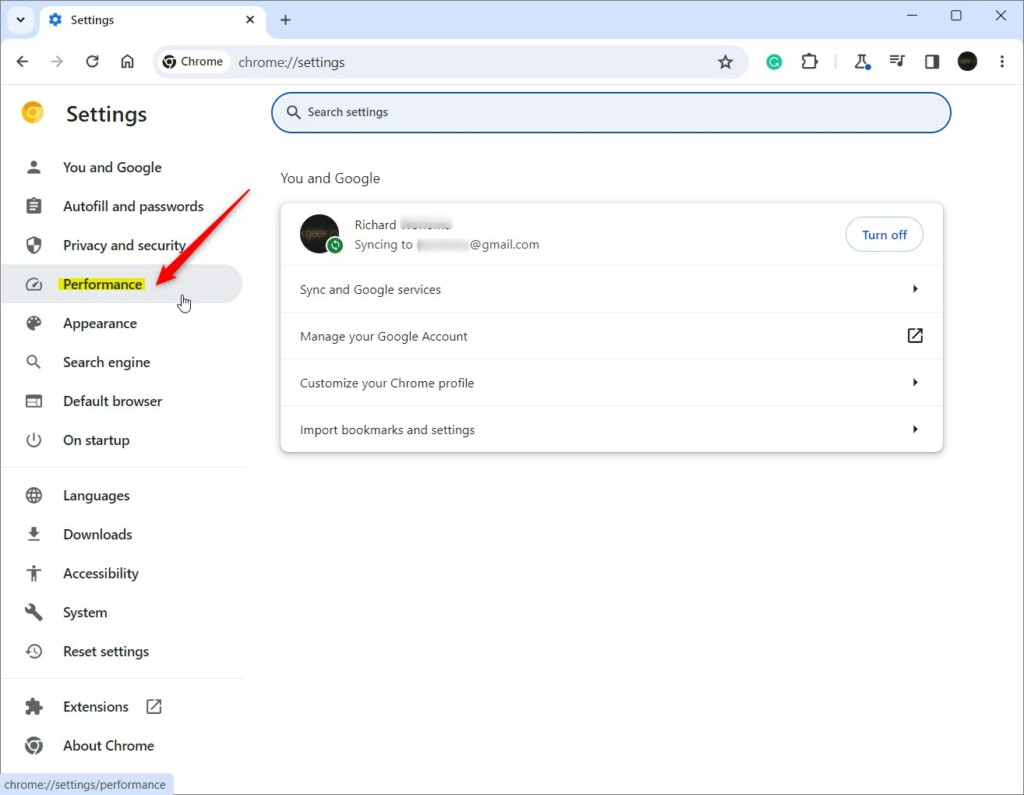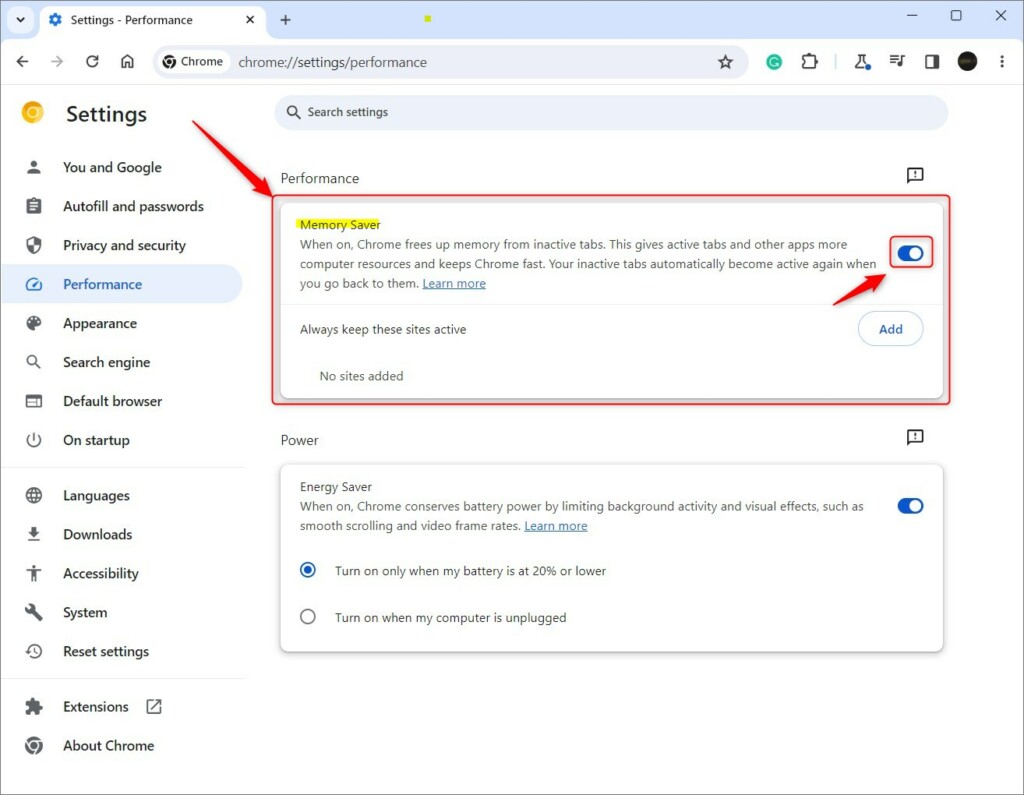This article explains how to turn “Memory Saver” on or off in Google Chrome.
Google Chrome is a cross-platform web browser developed by Google. It and Microsoft Edge share the same codebase. They are practically identical in basic functionalities, using browsing activities, including history and other browsing data, to provide personalized ads, search, shopping, and news.
To improve battery life and speed up your Chrome browser, Google added a feature called “Memory Saver.” This feature saves your computer’s memory and helps active tabs run smoothly by deactivating tabs you aren’t currently using.
When you access an inactive tab, it automatically reloads.
When on, Chrome frees up memory from inactive tabs. This gives active tabs and other apps more computer resources and keeps Chrome fast. Your inactive tabs automatically become active again when you go back to them.
Enable or disable Memory Saver in Google Chrome
As mentioned above, Google Chrome has a “Memory Saver” feature that helps speed up your computer by deactivating tabs you aren’t currently using. This gives active tabs and other apps more computer resources and keeps Chrome fast.
Here’s how to turn it on or off.
First, open the Google Chrome browser.
Then click on the Customize and Control (3 vertical dots button) in the top right corner and select Settings.

On the Settings page on the left panel, click the Performance link on the left.

On the right, select the “Memory Saver” tile on the Performance page.
Users can also use the URL below in the address bar to go directly to the Performance page in Chrome.
chrome://settings/performance
Next, toggle the Memory Saver button to the On or Off position to enable or disable.

Some settings and activities on your computer may prevent tab deactivation.
- Active audio or video (playback or calls)
- Screen share
- Page notifications
- Active downloads
- Partially filled forms
- Connected devices (USB or Bluetooth)
That should do it!
Reference:
Conclusion:
- Enabling Memory Saver in Google Chrome can improve battery life and speed up browsing by deactivating inactive tabs.
- Following the steps, users can easily turn Memory Saver on or off to optimize their browser’s performance.
- Remember that certain activities or settings on your computer may prevent tab deactivation, such as active audio or video playback, screen sharing, page notifications, and more.
- For additional support and insights, refer to the official Google Support page linked in the reference section.

Leave a Reply